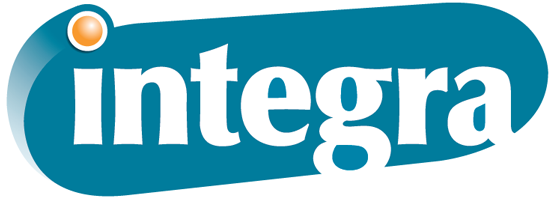How to Lower the Cost of Your Direct Mail Campaign
August 31st, 2023 | 5 min read

When it comes to a direct mail campaign that gets your company name, branding and offers out to an audience, the options can feel a bit daunting. When each minor factor and design tweak can change the price of every single piece that goes out in a campaign, you’ll want to understand all possible angles and make choices that keep costs low.
After all, the less you spend per piece, the more you can send out or funnel into other marketing efforts, right?
The good news is that here at Integra Graphics Synergy, we’ve been helping our clients with this very situation for almost two decades. You can take steps immediately to lower the cost of your next direct mail marketing effort, especially if you can leverage an experienced print management company to help you plan and then handle the details in one fell swoop.
Whether you’ve been engaging in this type of marketing for years or plan to launch your first initiative soon, you should be leveraging a few tried and true price-lowering methods to stay at the top of your game without paying top dollar. By the time you’ve finished reading through the upcoming tips, you should have several ideas about how to lower your own direct mail costs while still reaping the rewards of a well-designed direct mail campaign.
The 6 Major Ways You Can Lower Your Direct Mail Costs
While we could list dozens upon dozens of tips and tweaks to lower your mail marketing spend based on current postage trends and print prices, a few strategies prove evergreen year after year. In other words, you’ll always benefit from following these six tenets of establishing a budget-conscious, effective direct mail campaign.
1. Make Your Mailing List Data as Clean as Possible
One of the top costs associated with direct mail is, of course, the postage. So it follows that with a direct mail campaign hitting specific addresses, you’ll want to make sure those addresses are accurate and that you maintain mailing list hygiene. You can go about cleaning your mailing list in a number of ways, but the main benefits are:
- The correct recipients: If you’ve done market research on the locals who are likely to convert and purchase your products or services, or you’ve spent months curating a mailing list filled with interested parties, you’ll want to make sure those are the individuals actually getting your direct mail sendouts. Let’s say the originally intended recipient moved out. Maybe your postcard or catalog ends up in someone’s hands, since someone new might be living there, but you’d be rolling the dice on whether or not the postage was worth the dice roll.
- A lack of dead addresses: Arguably even worse than your meticulously planned direct mail prints going to the wrong people is them going to no people at all, and that’s what happens with “dead” addresses. Whether the property has been without tenants for a time or the building has been altogether demolished, you won’t get far sending a postcard to a defunct address.
- Duplicate removal: Depending on the way you curate and maintain your mailing list, you may end up with unwanted duplicate entries. Sometimes, duplicate addresses make sense, such as if one business has multiple ideal recipients for your piece. But most times, it’s the result of data entry shortcomings. Maybe someone fills out a contact form with you numerous times and ends up on the mailing list each time, for instance. Regardless of how it happened, it’s time to dedupe. You’ll save money for every single duplicate address removed from your mailing list, which can quickly add up. In fact, many companies drop as much as 15 to 20% bulk when they ensure mail list hygiene!
2. Choose Your Print Specs Carefully Before the Direct Mail Sendout
Next up on the list of cost factors is the way you design your direct mail. The printing process itself and the characteristics of each printed piece will influence cost. For instance, a several-page, full-color catalog will inevitably cost more than a flier with one side printed in black and white.
Along with your print costs, you’ll want to consider how the specs you choose affect your postage. Since postage is without a doubt the most expensive part of a direct mail campaign, it should be top of mind while you’re in the planning and design phases of the project.
Will you add inserts? Embellishments? Maybe you want to turn your company logo into magnets for your customers’ fridges. Or perhaps a scratch-off section with a discount code underneath will act as a call to action that moves your recipients into a buying mindset. Every tweak, addition and subtraction to your direct mail selections and materials will change the price of the job and likely — assuming size or weight changes — the postage.
3. Do Everything in Your Power to Avoid Being “Bounced”
The USPS imposes a number of restrictions and requirements on each piece of mail they send out. If you don’t meet the right requirements, you may find yourself paying more per piece in postage. That’s bad. Even worse? Getting bounced altogether.
If your direct mail sendouts get bounced, you’ll lose your postage investment, nothing will get sent out, and you’ll need to start all over again. That means reprinting everything that got bounced, paying for fresh postage and almost certainly delaying this leg of your campaign.
4. Select Direct Mail Demographics That Make Sense for Your Business
With today’s demographics data, you can really hone in on your target audience and reach prospects and buyers with the highest potential to respond to your campaign. The more specific you make your filters, the more chance you’ll have to miss people who may have been interested. On the other hand, the less you’ll spend on residents who aren’t a great fit for your particular offer.
The ultimate cost of your list data will usually be charged per 1,000 records, meaning the more you lean on filters, the lower your initial costs will be. Some of the laser-focused filters we’re talking about include:
- Home type
- Owner vs. renter status
- Family size
- Family composition
- Age of residents
- Professions
- Annual household income
- Political leanings
- Religious affiliations
- Hobbies
As you prepare your direct mail phases, remember to double-check the quality of the list company sourcing your consumer data. You should be able to trust them to provide clean, up-to-date addresses. If you want to take your campaign a step further and follow up via email, you can gain access to the email addresses associated with each physical address for a small fee — usually about $20 per 1,000 records.
5. Select Direct Mail Geographics That Make Sense for Your Business
You’ll want to keep your mailouts focused in densely populated areas as much as possible. Rural areas cost more per address to mail to, so it’s more cost-effective to stay within the city limits and avoid those upcharges.
That said, sometimes rural recipients can be a business’s best prospects, so now is the time to do a little company soul searching and determine whether those mailouts to rural homes come with a high chance of return on investment. In other words, if you’re selling tractors, you’ll probably want to put in the extra funding to get word out to your target demographic groups — which just so happen to be in rural geographic areas.
If you’re new to your industry or town and unsure of your exact target, consider Every Door Direct Mail (EDDM) to reach all addressed locations in a specified mail route.
6. Schedule Each Mailing With Time to Spare
As with most things print and just about everything mail-related, the amount of extra time you can build into your campaign as a buffer will affect how smoothly the campaign goes. It can also heavily influence your bottom line, since first-class mail costs extra per piece. If you go with a standard delivery window, you’ll be waiting 7 to 10 days for your printed copies to reach the mailboxes in your neighborhood. Fortunately, that time frame won’t be an issue if you’ve planned for it.
Trust a Print Management Company for Turnkey Direct Mail Solutions
When it feels like infinite potential options could lower your direct mail overhead, increase revenue, turn customers off or unexpectedly tank the campaign, it can be hard to plan strategically at all, let alone make the right moves at the right times.
Here at Integra, we understand that the nuance and possibilities can be too much to measure all at once, which is why we want you to focus on the six tips covered above to lower your direct mail costs. When you’re happy with the price of your campaigns and getting the results you expect, you can begin testing other variables.
Once you’re comfortable with your direct mail process and pricing, with clean lists, the right homes and the perfect message for that audience, consider tracking response rates and building a cohesive omnichannel campaign with SynergyMail.
In the meantime, if you’re just preparing to launch your next direct mail campaign, find a print management company that will handle all direct mail factors while keeping you squarely in the driver’s seat.
If you'd like to learn more about what it's like to work with Integra Graphics Synergy, read about our print project management techniques by clicking the link below.
Topics:


